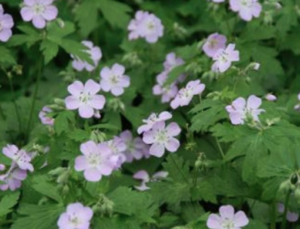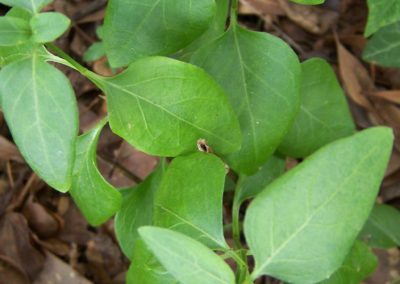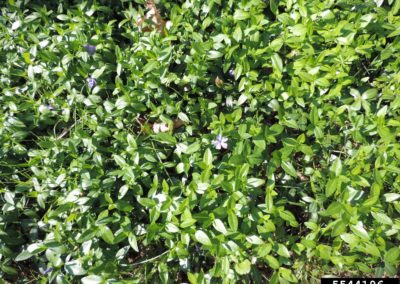Common Periwinkle (Vinca minor)
Invasive Management Profile
Common Periwinkle is also known by many other names such as Creeping Myrtle. Although Common Periwinkle is beautiful, it is an invasive vine that can cause harm to native plants in your yard.
Identification
Common Periwinkle is an evergreen vine which means its leaves will stay green through the winter. Leaves are dark green, glossy, thick, and 2 to 5 centimeters in length. They are elliptical in shape with a pointed tip. You may be able to identify a white center vein on the leaves. The main identifier of Common Periwinkle is the blueish purple flowers that bloom from late March to early May. The flowers have five petals that grow like a pinwheel at right angles from the center. Common Periwinkle will grow low to the ground.
Tools & Supplies Needed
- Rake
- Shovel
- Trimmer or lawn mower
- Protective eyewear, clothing, and gloves
- Paper or plastic bags for disposal
Removal Methods
Recommended methods of Common Periwinkle removal are hand pulling, raking, or digging up of the roots.
STEP 1 : Identify plant using our identification tips and photos as well as the time of year and growth stage.
STEP 2 : Wear protective eyewear, gloves, and clothing.
STEP 3 : Use your hand to grab the bottom of the plant, twist and pull.
STEP 4 : When pulling, make sure to remove the taproot, which is the main root system (this may be easily removed with a spade or shovel as well).
STEP 5 : Make sure to place all plant debris into a plastic or paper bag to control seed spread.
Disposal
For disposal of Periwinkle, place all removed plant debris into a paper or plastic bag after letting dry on a large tarp in the sun. Send to landfill for waste removal.
Native Alternative Species
To learn more about natives and how to landscape with them click here.
Carolina Geranium (Geranium carolinianum)

Photo Courtesy of National Wildlife Federation
Common Blue Violet (Viola sororia)

Photo Courtesy if National Wildlife Federation




